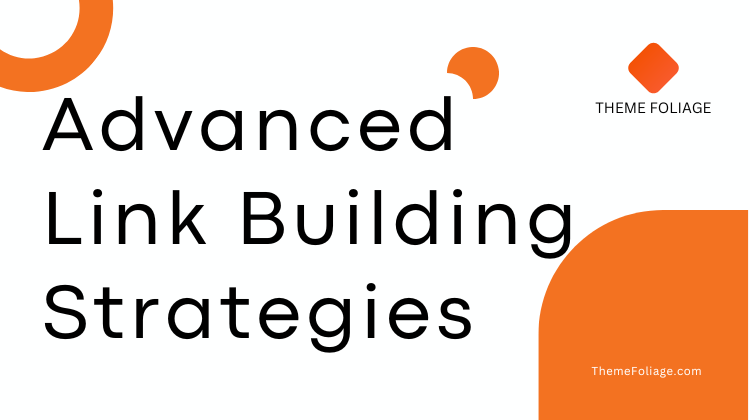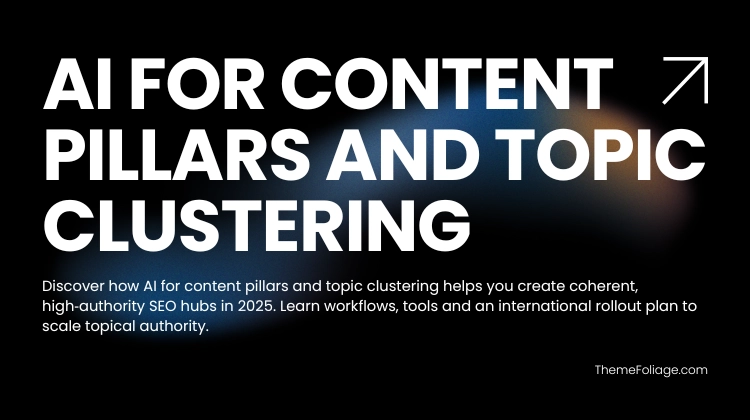In 2025, backlinks remain one of the most powerful ranking factors. But the way we earn links has evolved. Search engines now reward context, authenticity, and topical authority rather than sheer quantity.
This guide outlines advanced link building strategies designed for sustainable SEO growth in 2025, no spammy tactics, no shortcuts, just scalable, white-hat methods that build real brand equity.
Why link building still matters
Links remain the web’s currency of trust. Each quality backlink signals to search engines that your content is valuable, credible, and worth ranking. However, the focus has shifted from “how many” to “who links and why.” Modern link building emphasises relationship-building, content quality, and audience relevance.
- Authority over volume: One link from a topically relevant, authoritative site beats dozens from low-quality directories.
- Editorial context: Links surrounded by relevant content carry more weight than footer or sidebar links.
- Natural anchor diversity: Balanced anchor text helps maintain a natural profile and reduces algorithmic risk.
1. Digital PR and brand mentions
Digital PR combines storytelling and outreach to earn backlinks from media outlets, blogs, and industry sites. This approach builds authority and visibility beyond SEO alone.
- Create data-driven stories, surveys or insights that journalists want to cite.
- Use PR databases like MuckRack or HARO to connect with relevant journalists.
- Repurpose internal data into press-friendly infographics or short insights.
- Build journalist lists by topic — aim for relationships, not one-off outreach.
Pro tip: Use brand monitoring tools like Google Alerts or Ahrefs Mentions to find unlinked mentions and request attribution.
2. Linkable assets that attract naturally
Linkable assets are pieces of content that are so useful or original that other websites naturally link to them.
- Publish research reports or industry benchmarks.
- Create free tools, templates, or calculators that solve a real problem.
- Offer evergreen visual resources such as infographics or explainer diagrams.
- Produce expert roundups that feature multiple voices (contributors often link back).
Ensure each asset is backed by strong design, accurate data and simple shareability.
3. Content partnerships and co-marketing
Partner with complementary brands or influencers to create co-branded content that earns links from multiple audiences.
- Collaborate on guides, studies or webinars that deliver mutual value.
- Exchange expertise, not links, guest appearances on podcasts or case study collaborations can result in high-authority backlinks.
- Co-create visual or video content and distribute it across both networks.
4. Guest posting – the right way
Guest posting still works when done authentically. Focus on contributing expert-level insights, not recycled content.
- Target reputable, niche-relevant publications, avoid link farms.
- Pitch unique topics that fill content gaps on the target site.
- Include links naturally within the body, not just in the bio.
- Follow editorial guidelines carefully and provide true value to readers.
Tip: Prioritise websites with real traffic, indexed pages, and engaged audiences.
5. Broken link building – still effective
This classic tactic remains effective when automated and scaled properly.
- Find broken links on relevant pages using tools like Ahrefs or Screaming Frog.
- Recreate or repurpose the missing resource on your site.
- Reach out to the site owner, offering your updated version as a fix.
Because you’re providing genuine help, this approach often achieves high success rates.
6. Unlinked brand mentions
Brands are often mentioned without a backlink. Tracking and converting these mentions is a quick win.
- Use Ahrefs Alerts, Mention, or Google Alerts to track new brand mentions.
- Reach out politely and request that they link the brand name to your homepage or relevant page.
- Maintain an internal sheet tracking requests, successes, and follow-ups.
7. HARO & journalist outreach
Help A Reporter Out (HARO) and similar services connect experts with journalists looking for quotes.
- Sign up for daily HARO emails in your niche.
- Respond quickly with concise, credible insights.
- Include your credentials, link, and professional tone.
Media links from reputable sites (.edu, .gov, or news domains) dramatically strengthen authority signals.
8. Reverse-engineering competitors
Analysing competitors’ backlinks reveals new opportunities.
- Use tools like Ahrefs, SEMrush, or Majestic to find where competitors are getting links.
- Identify patterns: guest posts, directories, digital PR hits, or resource mentions.
- Replicate the valuable links and outdo them with superior content or design.
9. Community and forum engagement
Forums, Reddit threads, and niche communities offer organic link potential when approached carefully.
- Participate genuinely, offer real expertise before linking.
- Place contextual links where they add value, not in profiles or signatures.
- Communities like Indie Hackers, Product Hunt, or niche Slack groups can drive both traffic and links.
10. Advanced tactics: data visualisation & interactive content
Interactive content earns links because it is engaging, shareable, and resource-rich.
- Convert raw datasets into interactive maps or graphs.
- Create embeddable widgets or calculators others can add to their sites (with attribution link).
- Host downloadable assets like PDFs or templates with attribution requirements.
11. Link quality audit and disavow management
Every advanced link-building campaign requires ongoing quality control.
- Audit backlinks quarterly for spammy or toxic domains.
- Use Google’s Disavow Tool sparingly for harmful, irrelevant links you cannot remove manually.
- Prioritise maintaining a clean, authoritative link profile, quality beats quantity.
12. Measuring link-building success
- Track referring domains growth and domain authority improvements.
- Monitor organic visibility and keyword movement for linked pages.
- Evaluate traffic quality: referral traffic from links should show engagement, not bounce.
13. Common mistakes to avoid
- Buying links or participating in private blog networks (PBNs).
- Using over-optimised anchor text repeatedly.
- Ignoring link relevance or topical context.
- Failing to track outreach or follow up with editors.
14. Link-building tools to streamline workflow
- Research: Ahrefs, SEMrush, Majestic, Moz.
- Outreach: Pitchbox, BuzzStream, Hunter.io.
- Tracking: Google Sheets, Airtable, Notion CRM templates.
- Alerts: Mention, Google Alerts, Brand24.
15. Sustainable link-building mindset
Advanced link building in 2025 is about credibility, not manipulation. Build relationships, create link-worthy assets, and aim for long-term reputation building. Remember: links are earned, not manufactured.
Conclusion
Link building remains an art, one that balances technical expertise, content marketing and genuine outreach. The best strategies of 2025 reward brands that invest in trust, provide value, and participate meaningfully in their industries.
Implement these techniques consistently, measure results, and focus on relationships, because authority, once earned, compounds over time. Feel free to check out a must-read article – Ecommerce SEO.



